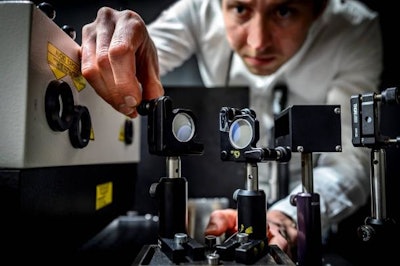
In science and in nature, there are some processes — such as chemical reactions — that happen so fast, it’s impossible to capture them on moving film.
Now a team of researchers at Lund University in Sweden have invented a camera that can capture a staggering 5 trillion images per second. They say the speedy camera will allow scientists to more easily observe super-fast processes in chemistry, physics, biomedicine and biology.
Initially, the team sought to see processes in nature that happen at a mind-boggling speed and on a picosecond or femtosecond scale. To give you an idea, the number of femtoseconds in one second is much larger than the seconds in one person’s average lifetime.
“This does not apply to all processes in nature, but quite a few, for example, explosions, plasma flashes, turbulent combustion, brain activity in animals and chemical reactions. We are now able to film such extremely short processes,” says Elias Kristensson in a press release. “In the long term, the technology can also be used by industry and others”.
The camera works by capturing several coded images in one picture which is then sorted into a video sequence.
“In short, the method involves exposing what you are filming (for example a chemical reaction) to light in the form of laser flashes where each light pulse is given a unique code. The object reflects the light flashes which merge into the single photograph. They are subsequently separated using an encryption key,” the team reported.
The team hopes that the invention will be particularly helpful when studying combustion and could eventually aid research on making more fuel efficient car engines and gas turbines. Specifically, they believe it will allow them to see the chemistry of plasma discharges, how chemical reactions start and the lifetime of quantum states in “combustion environments and biological tissue.”






















